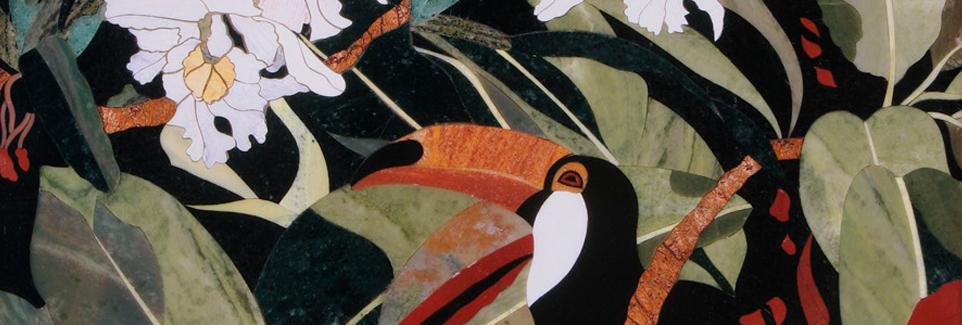












The largest collection of vessels is in the British Museum and Iznik tiles may be seen in quantity in the imperial and religious buildings of Istanbul.
Iznik vessels were originally made in imitation of Chinese porcelain, which was highly prized by the Ottoman sultans. As Turkish potters were unable to make porcelain, the vessels are fritware, a low-fired body comprising mainly silica and glass.
The originality of the potters was such that their use of Chinese originals has been described as adaptation rather than imitation. Since Chinese ceramics has long been admired, collected, and emulated in the Islamic world, and it was especially the case at the Ottoman court and the Safavid court in Persia (where important collections of Chinese blue-and-white porcelains were assembled), such Chinese porcelains not only influenced the style of Safavid pottery and other decorative arts, but they had an especially strong impact on the development of the Ottoman pottery such as the Iznik ware. By the mid-16th century, Iznik had its own vocabulary of floral and abstract motifs in tight designs making use of a limited palette. Decoration progressed from pure symmetry to subtle rhythms.
From the late 15th century, red earthenware from Iznik began to be replaced by a white body made of 80% silica, 10% glass frit and 10% white clay. Lead and soda were added to reduce the firing temperature. Fritware had been made in the Near East from the 13th century, but Iznik fritwares, achieving a white surface, were a major innovation.
As the body was difficult to work on the wheel, due to its lack of plasticity, vessels were seldom thrown in one piece. Often they were moulded or turned.
The wares were coated with a very white slip before bisque firing. Decoration was applied underglaze on the bisqued wares, the outlines pounced through a stencil. Seven colours were used in various combinations (though there are many effective Iznik designs using only two, three or four colours): blue (cobalt oxide), purple (manganese), red (silica and iron oxide), green (copper oxide), turquoise, grey and black. Before 1520, Iznik ware was decorated mainly in blue. From the 1520s turquoise was added. The polychrome palette developed from 1540-1560.
The wares were glazed with a lead-alkaline-tin glaze, whose composition has been found from analysis to be: lead oxide 25-30%; silica 40-55%; sodium compounds 8-14%; tin oxide 4-7%. The use of tin oxide, normally employed to render glaze opaque, is surprising, but in Iznik glazes it remains in solution and hence transparent. Firing was done in an updraft kiln, to about 900oC.
Jugs, hanging lamps, cups, bowls and dishes were made, inspired by metalwork and illuminated books as well as Chinese ceramics. Under Süleyman the Magnificent (1520-66), demand for Iznik wares increased. Many large dishes were made with looser designs, incorporating ships, animals, trees and flowers. The dishes appear to have been made for display, as most have pierced footrings, but they have been observed also to be scratched from use. Designs in the 1520s include the saz style in which a long, serrated saz leaf, dynamically arranged, is balanced by static rosette forms. In the later 16th century, the quatre fleurs style used a repertoire of stylised tulips, carnations, roses and hyacinths.
After the conquest of Constantinople in 1453, the Ottoman sultans started a huge building programme. In these buildings, especially those commissioned by Süleyman, his wife Hürrem (Roxelana) and his Grand Vizier Rüstem Pasha, large quantities of tiles were used. The Sultan Ahmed Mosque in Istanbul (the "Blue Mosque") alone contains 20,000 tiles. The Rüstem Pasha Mosque is more densely tiled and tiles were used extensively in the Topkapi Palace. As a result of this demand, tiles dominated the output of the Iznik potteries.
The decline of Iznik pottery has been linked with the decline in Ottoman power and with the Sultans' imposition of fixed prices in a period of inflation. The reduction in imperial demand inevitably affected the Iznik economy and by the mid-17th century only twenty kilns remained and knowledge had been lost. The design of later Iznik wares is generally regarded as weak.
Fritware is still produced at Kütahya, about 200 km south of Istanbul, principally for the tourist trade and in imitation of Iznik ware.
By Appointment
DE FERRANTI
South Park Studios - Suite 10
88 Peterborough Road, London SW6 3HH
United Kingdom